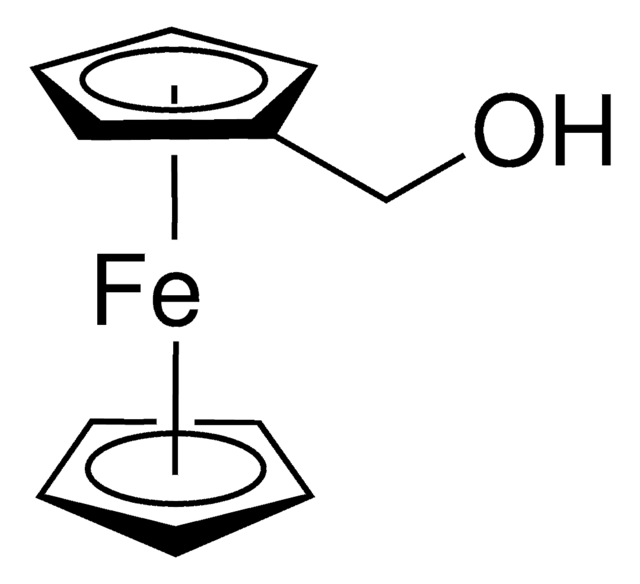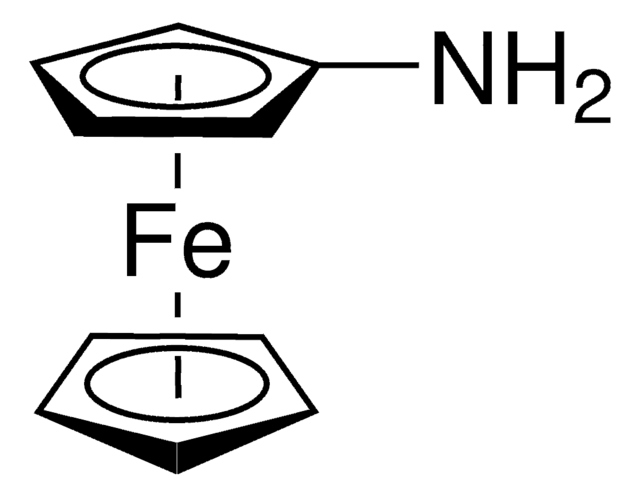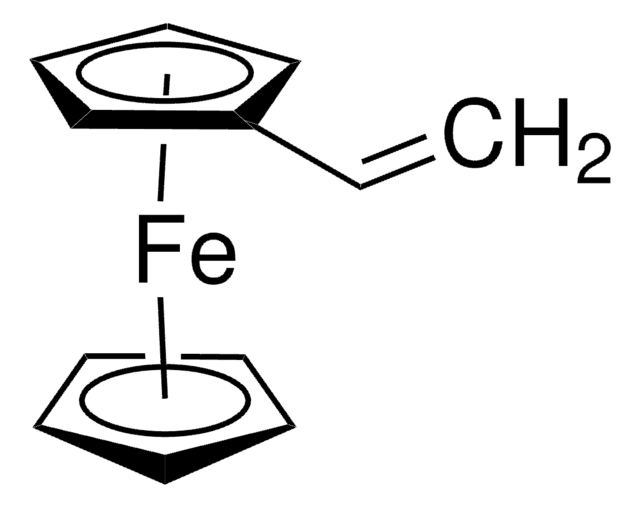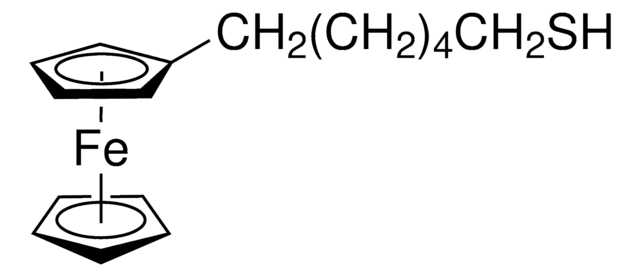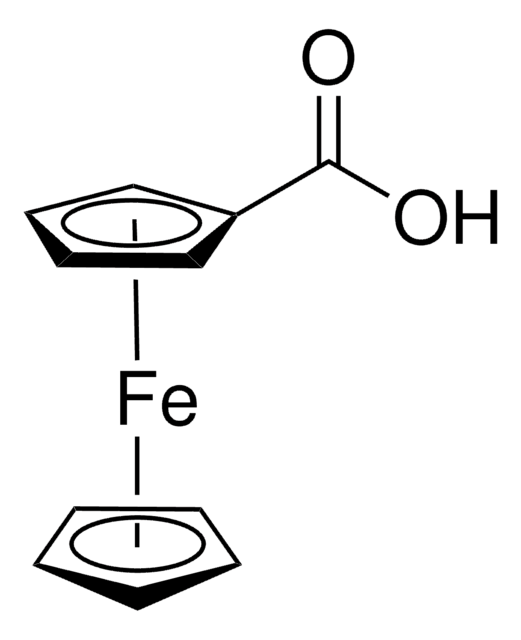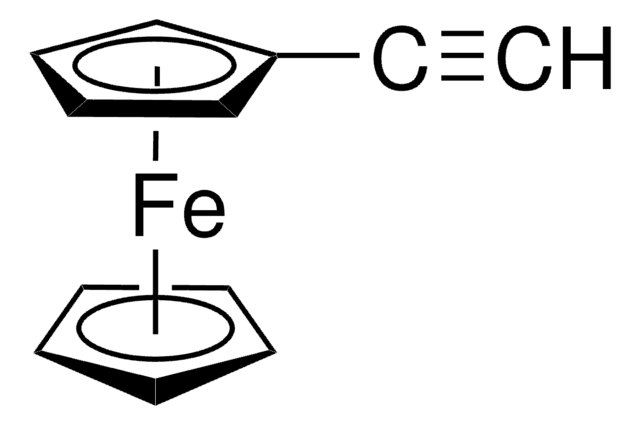700479
Ferrocenylmethyl methacrylate
95% (NMR), contains Ionol® 46 (Raschig GmbH) as inhibitor
Synonym(s):
FMMA
About This Item
Recommended Products
Quality Level
Assay
95% (NMR)
form
solid
contains
Ionol® 46 (Raschig GmbH) as inhibitor
mp
52-54 °C
storage temp.
−20°C
SMILES string
[Fe].[CH]1[CH][CH][CH][CH]1.CC(=C)C(=O)OC[C]2[CH][CH][CH][CH]2
InChI
1S/C10H11O2.C5H5.Fe/c1-8(2)10(11)12-7-9-5-3-4-6-9;1-2-4-5-3-1;/h3-6H,1,7H2,2H3;1-5H;
InChI key
GSPYKNCYLXXOJO-UHFFFAOYSA-N
Legal Information
Signal Word
Warning
Hazard Statements
Precautionary Statements
Hazard Classifications
Eye Irrit. 2 - Skin Irrit. 2 - STOT SE 3
Target Organs
Respiratory system
Storage Class Code
11 - Combustible Solids
WGK
WGK 3
Flash Point(F)
Not applicable
Flash Point(C)
Not applicable
Personal Protective Equipment
Choose from one of the most recent versions:
Certificates of Analysis (COA)
Don't see the Right Version?
If you require a particular version, you can look up a specific certificate by the Lot or Batch number.
Already Own This Product?
Find documentation for the products that you have recently purchased in the Document Library.
How does the storage temperature relate to shipping conditions?
The storage conditions that a Sigma-Aldrich catalog and label recommend for products are deliberately conservative. For many products, long-term storage at low temperatures will increase the time during which they are expected to remain in specification and therefore are labeled accordingly. Where short-term storage, shipping time frame, or exposure to conditions other than those recommended for long-term storage will not affect product quality, Sigma-Aldrich will ship at ambient temperature. The products sensitive to short-term exposure to conditions other than their recommended long-term storage are shipped on wet or dry ice. Ambient temperature shipping helps to control shipping costs for our customers. At any time, our customers can request wet- or dry-ice shipment, but the special handling is at customer expense if our product history indicates that the product is stable for regular shipment. See Shipping and Storage for more information.
Which document(s) contains shelf-life or expiration date information for a given product?
If available for a given product, the recommended re-test date or the expiration date can be found on the Certificate of Analysis.
How do I get lot-specific information or a Certificate of Analysis?
The lot specific COA document can be found by entering the lot number above under the "Documents" section.
How do I find price and availability?
There are several ways to find pricing and availability for our products. Once you log onto our website, you will find the price and availability displayed on the product detail page. You can contact any of our Customer Sales and Service offices to receive a quote. USA customers: 1-800-325-3010 or view local office numbers.
What is the Department of Transportation shipping information for this product?
Transportation information can be found in Section 14 of the product's (M)SDS.To access the shipping information for this material, use the link on the product detail page for the product.
What is the inhibitor used in Product No. 700479, Ferrocenylmethyl methacrylate?
The inhibitor used in this product is 2,2´-methylenebis(6-tert-butyl-4-methylphenol) (CAS registry number [119-47-1]), which is a non-discoloring and non-staining stabilizer. It is widely used in industry especially in natural and synthetic rubber.
How can the monomer ferrocenylmethyl methacrylate, Product 700479, be polymerized?
Generally, Product No. 700479 can be polymerized with an anionic initiator such as butyllithium (Product No. 230707) or lithium aluminum hydride (Product No. 531502). Or it can be radically polymerized using an initiator such as 2,2´-Azobis(2-methylpropionitrile) (AIBN, Product No. 44109).
What applications can Product 700479, Ferrocenylmethyl methacrylate, be used for?
Thin films of poly- ferrocenylmethyl methacrylate can be used for biosensing applications, taking advantage of the redox behavior of the ferrocenyl unit.
My question is not addressed here, how can I contact Technical Service for assistance?
Ask a Scientist here.
Our team of scientists has experience in all areas of research including Life Science, Material Science, Chemical Synthesis, Chromatography, Analytical and many others.
Contact Technical Service